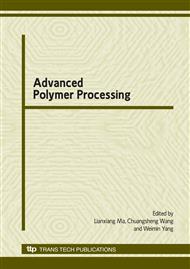p.345
p.351
p.357
p.363
p.369
p.375
p.381
p.387
p.393
The Model Reconstruction of Carbon Black/Rubber Composites’ Heat Generation Ratio Based on Levenberg-Marquardt BP Algorithm
Abstract:
Different temperature, different frequency, different recipe, then heat generation ratio of carbon black/rubber composites will be different. An artificial neural network model has been developed based on the analysis of the relation between carbon black/rubber composites‘ heat generation ratio and temperature,frequency.The neural network model is compared with the quadratic fitting formulae and relative errors is analyzed. The simulation results indicated the neural network model’s precision is greater than the quadratic fitting formulae’s, and artificial neural network theory can be used in the research field of carbon black/rubber composites’ thermophysical properties.
Info:
Periodical:
Pages:
369-374
Citation:
Online since:
December 2009
Authors:
Price:
Сopyright:
© 2010 Trans Tech Publications Ltd. All Rights Reserved
Share:
Citation:


